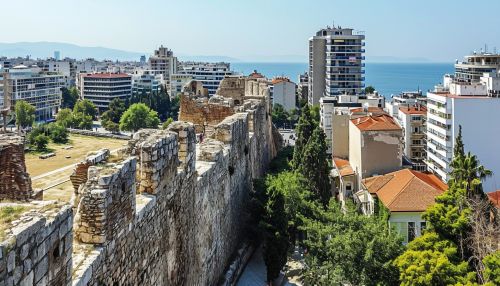Thessaloniki
History
Thessaloniki, also known as Salonica, is a city with a rich and complex history. Located in the northern part of Greece, it is the second-largest city in the country and the capital of the region of Central Macedonia. The city's history can be traced back to 315 BC when it was founded by King Cassander and named after his wife, Thessalonike, who was the half-sister of Alexander the Great.


Ancient and Roman Thessaloniki
Thessaloniki's strategic location made it an important city in the ancient world. It was a crucial hub on the Via Egnatia, the Roman road that connected the Adriatic Sea to the Bosphorus. The city's importance grew under Roman rule, becoming the capital of one of the four Roman districts of Macedonia. Thessaloniki was also a significant center of Hellenistic culture and learning, attracting scholars and philosophers from across the ancient world.
Byzantine and Ottoman Thessaloniki
With the division of the Roman Empire, Thessaloniki became a major city of the Byzantine Empire. During this period, the city experienced a cultural and architectural renaissance, with many churches and fortifications being built. However, the city also faced numerous invasions and sieges from various foreign powers. In 1430, Thessaloniki fell to the Ottoman Turks, who ruled the city for nearly five centuries. Under Ottoman rule, Thessaloniki became a multicultural city, home to a diverse population of Greeks, Turks, Jews, and other ethnic groups.
Modern Thessaloniki
Thessaloniki was liberated from Ottoman rule in 1912 during the First Balkan War. In the 20th century, the city faced numerous challenges, including a devastating fire in 1917, the population exchange between Greece and Turkey in 1923, and the occupation by Axis powers during World War II. Despite these hardships, Thessaloniki has emerged as a vibrant and cosmopolitan city, known for its rich cultural life and historic landmarks.
Geography and Climate
Thessaloniki is located in the northeastern part of Greece, on the Thermaic Gulf of the Aegean Sea. The city is surrounded by the Chortiatis mountain range to the southeast and the Thermaic Gulf to the west, creating a unique microclimate. Thessaloniki has a Mediterranean climate, with hot, dry summers and mild, wet winters. The city's climate and geographical location have played a significant role in its development and history.
Economy
Thessaloniki is a major economic hub in northern Greece. The city's economy is diverse, with sectors such as trade, transportation, real estate, manufacturing, and tourism playing significant roles. Thessaloniki is home to the Thessaloniki International Fair, one of the most important trade fairs in Southeast Europe. The city also has a thriving cultural and creative economy, with numerous museums, galleries, and festivals contributing to its economic vitality.
Culture
Thessaloniki is known for its vibrant cultural scene. The city is home to numerous cultural institutions, including the Thessaloniki International Film Festival, the State Museum of Contemporary Art, and the Thessaloniki Concert Hall. The city's historic center, with its Byzantine walls, Ottoman-era buildings, and Roman forum, is a UNESCO World Heritage Site. Thessaloniki is also famous for its cuisine, with local specialties such as bougatsa, souvlaki, and retsina wine being popular.
